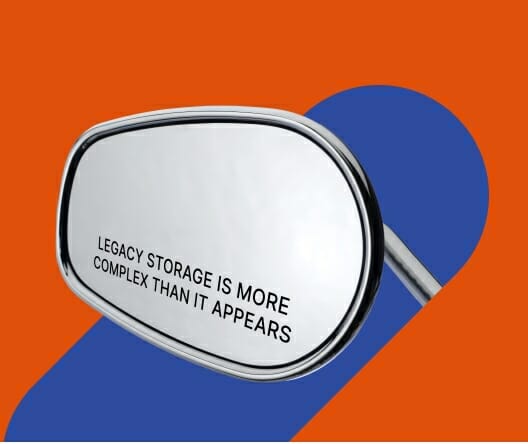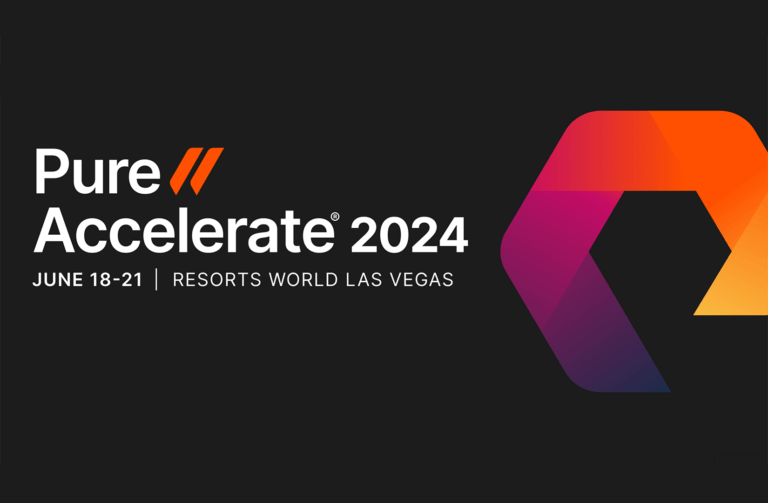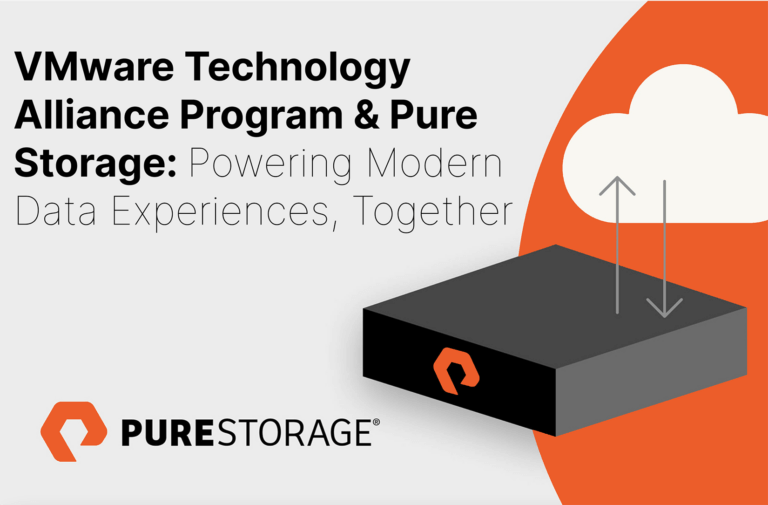When companies host their annual customer and partner conferences, they usually make significant announcements at the event. This year, NetApp did things differently. The company made some initial announcements via media articles and blog posts the week before NetApp Insight 2020. One might wonder if NetApp did this because another company’s annual event was taking place that same week.
So then what was left to highlight at the NetApp Insight event? The event agenda included a bunch of keynotes and breakout sessions, which were posted online. The keynote sessions had a lot of traditional marketing messages with some new buzzwords mixed in.
So, what insights did you get from the show?
On the Hardware Front
Charlie Giancarlo, Chairman and CEO at Pure Storage, describes today’s environment as moving toward “storage as code.” Infrastructure is becoming less and less visible and hardware becoming less relevant than software. Still, there is, and will always be, servers and storage arrays somewhere.
It’s interesting to note that NetApp is still playing catch up when it comes to hardware storage technologies. For example, NetApp announced that its AFF portfolio is finally all-NVMe—almost three years after Pure Storage® announced all-NVMe FlashArray//X at Pure//Accelerate 2018. In February 2020, we introduced all-NVMe on the FlashArray//X10 and //X20 models.
And what about storage-class memory (SCM)? NetApp didn’t talk about its MAX Data product (from its Plexistor acquisition) at the event and it’s no longer listed on NetApp’s Data Storage page. Is it still alive? Does NetApp have any plans to add SCM to its AFF arrays? 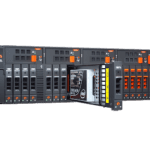
Pure announced DirectMemory™ modules for FlashArray//X70R2 and //X90R2 storage with Intel Optane-based storage-class memory in September 2019. You can non-disruptively add DirectMemory modules to a new or existing FlashArray//X70R2 or //X90R2 to accelerate application performance. You can expect read-latency improvements of up to 50%.
On the Software Front
NetApp claims it brings innovation to the operating system. But which one? ONTAP, Element OS, SANtricity, or StorageGRID? This is a pretty long list of heterogeneous operating systems.
I’m wondering which OS gets the bulk of NetApp’s R&D dollars, which was 16% of its revenue in the previous fiscal year. Compare that to Pure’s investment of 26% of our revenue in the last fiscal year. With a leaner portfolio, Pure has fewer products to spread those R&D dollars over. That’s what we call a focus on innovation.
Back to the operating system discussion. NetApp added S3 protocol support to its later version of ONTAP and claims that it’s been simplified (again). Adding more features to an operating system born in 1992 doesn’t simplify it in my book. Just ask NetApp how many parameters are available on the volume create operation. Try more than 30. It’s the opposite of simplicity.
So with ONTAP supporting S3, NetApp now has two distinct object-storage solutions that use different hardware and software. StorageGRID is positioned as NetApp’s flagship or primary solution, so what is the point of the other (ONTAP S3)? Let’s say you want to use NetApp object storage and start small with ONTAP S3. As you grow your object storage environment, you’ll reach some limits and need to move up to the “flagship” StorageGRID. That means you’ll need to buy a new hardware and software license, learn a new product, rewrite your script or API integration from scratch, and then migrate all your data. That doesn’t sound cheap or easy.
We think Pure’s modern object-storage solutions provide a better option. 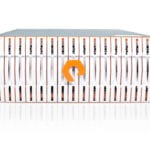
Pure FlashBlade® is the industry’s most advanced all-flash storage solution for consolidating fast file and object storage. With FlashBlade you can modernize your storage with a unified unstructured platform that is managed by Pure1® centralized cloud-based management. You get the advantage of a scale-out system from the initial 15-blade chassis to full 10x scale to up to 150 blades.
The Future Is in the Cloud
Let’s forget on-premises solutions for a moment. NetApp positions itself as the cloud storage specialist, but reported a $111M annual run rate (ARR) for its Cloud Data Services in its last fiscal year. That’s just 2% of NetApp’s FY20 net revenues—an underwhelming number for a company claiming to be “the specialists.” And if you refer to the R&D investment ratio, you might wonder how much money this business unit gets compared to its very small return.
And there’s “project” Astra, which NetApp claims is designed to unlock the power of Kubernetes. There was a technology preview in April 2020 and it’s now a Beta release but only available in Google Cloud Platform as of today. NetApp claims that support for other public clouds will come later next year with Azure first and then AWS in 2021. You’ll need to be patient if you hope to unlock the power of Kubernetes with NetApp.
Luckily, when it comes to a data-management solution for containerized apps, Pure provides a much better alternative—a proven technology that’s available now.
Portworx® is the leading cloud-native data management and software-defined storage solution. Pioneering the concepts of data persistence as well as resiliency and portability across clouds, Portworx offers a suite of products to provide the Kubernetes Data Management Platform. PX-Store provides cloud-native storage for Kubernetes anywhere—in every public cloud and with integrations for block-storage services from cloud providers. (Learn more about how Portworx and Pure support innovation with Kubernetes.)
Portworx delivers the Kubernetes-native data services required by both cloud-native and traditional apps. This means delivering block, file, and object storage services, in multiple performance classes, provisioned on-demand as containerized apps require. It means providing instant data access, protection across all types of failures, the ability to mobilize data between clouds (and even to/from the edge), and robust security no matter where an application travels.
How do you manage the data for your apps in a hybrid-cloud environment?
While NetApp has acquired several companies in the last few years—including Greenqloud, StackPointCloud, and Spot. Do the acquisitions make it easier to manage NetApp cloud or on-prem solutions? We think it’s actually getting more complex as the list of management tools just gets longer. Let’s look at a couple of tools advertised by NetApp. Which one should you learn and use?
- Cloud Manager (Is it truly SaaS with no on-prem software?), System Manager, Cloud Insight, Spot Ocean, Spot Cloud Analyzer, Project Astra, or Active IQ Digital Advisor?
- All of the above?
- What about the NetApp Service Engine tool if you use a storage-as-a-service consumption model?
Pure Storage believes in simplicity. Pure1 delivers centralized cloud based management and support for all Pure products, including FlashArray™, FlashBlade™, and Pure Cloud Block Store™, to provide a consistent control plane for customers. Pure1 delivers a Modern Data Experience™ with self-driving storage for hybrid clouds, AI-powered data-storage management and monitoring. With Pure Cloud Block Store™ (available today on AWS and soon on Azure), you can combine on-prem and cloud solutions and have seamless data mobility, resilience, and a consistent experience—no matter where your data lives. All of this managed with a single tool and API, Pure1, and with a unified subscription between on-prem and cloud with Pure as-a-Service™.
Storage as a Service and Technology Refreshes
There is still very limited public information about the Keystone financial program that NetApp announced at its Insight 2019 event. This year, although NetApp advertised its Keystone Flex Subscription model, there was almost no mention of the Keystone Flex Utility which isn’t available yet.
With this subscription model, NetApp is introducing yet another management tool: “NetApp Service Engine: The Integrated Monitoring Platform for NetApp Keystone.” The question is why isn’t NetApp sharing more detailed information about this program?
If you are looking for a truly flexible consumption model, Pure as-a-Service™ is a storage-as-a-service offering for on-premises and public cloud. It allows you to efficiently operate a hybrid cloud by unifying your environment with one subscription and one set of storage services. It has a proven track record and is fully documented with publicly available information.
Pure as-a-Service blends file, block, and object storage across to support all the use cases enterprises need right now. Learn more about how Pure makes it easier to ramp up remote teams.
So, how do you do non-disruptive technology refreshes, with no capacity rebuy and no performance impact?
NetApp didn’t mention anything at its event about the previously announced NetApp NextCredit program. NetApp customers still have to go through complex hardware upgrade processes (which can be disruptive), and in some cases, they have to re-buy storage capacity (e.g. moving from a SAS backend storage to NVMe storage).
Available since 2012, Pure Evergreen Storage™ helps you eliminate storage refreshes, expensive upgrade cycles, and rebuying TBs. Check out this side-by-side comparison for more details.
What Insight to Take Away?
If you think about what NetApp announced and discussed at its event, you’re probably wondering if there’s anything new to know. Not really. From our perspective, NetApp is:
- Playing catch up on the hardware front
- Adding even more complexity to existing software solutions
- Announcing “projects” instead of products
- Adding more management tools to an already long and complex list
- Providing limited public information about a true utility consumption model
- Offering no clear program for technology refreshes
It’s time to put complex legacy storage solutions in your rearview mirror. Discover a better way to interact with your data through storage—for on-prem and clouds—that’s always modern, easy to manage, and provides a flexible way to consume.
-
www.youtube.com/watch?v=dT4RF0u0JLk & www.youtube.com/watch?v=sQR1d1TV7M0
-
www.netapp.com/data-storage
-
www.netapp.com/us/media/financial-q4-fy20-442183.pdf
-
d18rn0p25nwr6d.cloudfront.net/CIK-0001474432/d71429b8-bfd0-4481-b26a-32deb855c26c.pdf
-
docs.netapp.com/ontap-9/index.jsp?topic=%2Fcom.netapp.doc.dot-cm-cmpr-970%2Fvolume__create.html&cp=5_1_29_1
-
whyistheinternetbroken.wordpress.com/2020/01/17/ep224-fabricpool-in-ontap97/
-
blog.netapp.com/new-ONTAP-9-8-innovations
-
The ONTAP API is different from the StorageGRID API
-
www.netapp.com/us/media/earnings-summary-q4-fy20-50206.pdf
-
www.youtube.com/watch?v=dT4RF0u0JLk
-
cloud.netapp.com/blog/blg-cloud-manager-transition-to-software-as-a-service
-
www.netapp.com/services/subscriptions/keystone
-
blog.netapp.com/subscription-or-bust
-
www.netapp.com/newsroom/press-releases/news-rel-20170605-993772
-
docs.netapp.com/platstor/index.jsp?topic=/com.netapp.doc.hw-upgrade-controller/home.html
-
www.netapp.com/data-storage/disk-shelves-storage-media
-
https://netapp.io/2020/10/30/trident-2010/
